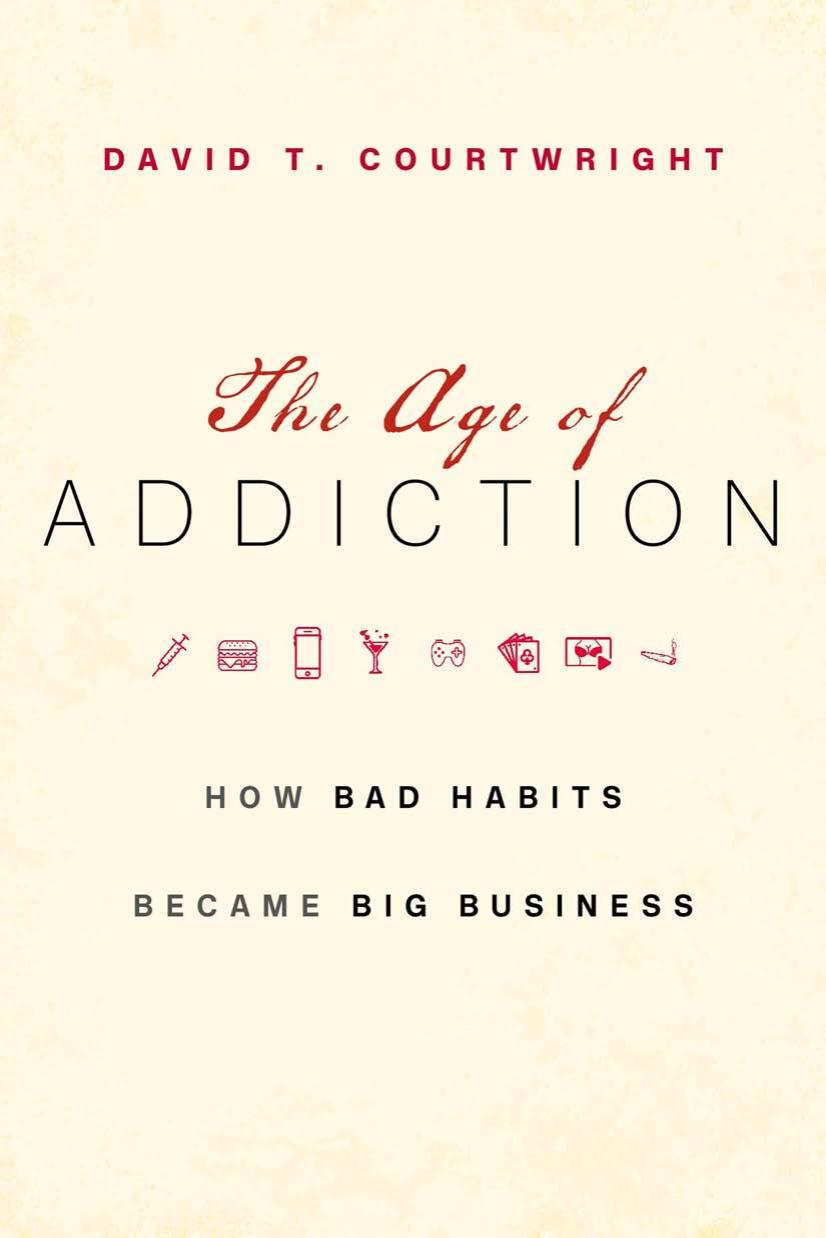The Age of Addiction by David T. Courtwright

Author:David T. Courtwright
Language: eng
Format: epub, pdf
Publisher: Harvard University Press
FOOD FIGHT
Putting aside the question of whether habitual overconsumption of rich food harmed offspring, did it really constitute an addiction analogous to alcoholism, as neuroscientists now insisted? Their critics said no, and challenged the broader claim that addiction to food or anything else was a chronic, relapsing brain disease. This debate has become so sprawling and contentious that I have recast it as a dialogue between the pro–food addiction camp and the anti–food addiction camp, taking one contention at a time. The antagonists are composites. The arguments are real.22
CON: You can’t compare drugs and food. We don’t have to take drugs. We do have to eat.
PRO: Eat food, yes. Eat engineered food, no. People don’t overconsume corn. They overconsume corn processed into Cheetos, Doritos, and other mass-marketed, synthetically flavored products designed to maximize brain reward.
C: So take junk food off the grocery list.
P: Not so easy if you’re hooked.
C: Get unhooked. This is a bad habit, not a real brain disease like schizophrenia or multiple sclerosis. People quit bad habits all the time.
P: People don’t quit cravings or forget cues. They don’t restore lost receptors with a snap of their fingers.
C: But they can overcome bad habits by adopting other, healthier habits. They can change their routines. Start going to Weight Watchers, stop going to McDonald’s. What you call addiction has an element of choice and a developmental trajectory. People wise up as they get older. They outgrow addictions, often quitting on their own. Ex-tobacco smokers outnumber current smokers in several developed nations.
P: Yet people have to eat, as you say. And shop for groceries. Talk about cues. But, yes, there are workarounds like learning to prepare meals with fresh, carefully measured, low-fat ingredients. And avoiding fructose, which is nothing but a brain-pleasing additive.
C: The vast majority of people eat and drink fructose at least occasionally. Ditto other feel-good additives. Yet they don’t all become addicts.
P: You could say the same thing of drugs. Fewer than 20 percent of the people who ever try crack or heroin wind up as addicts. More people than that have trouble controlling food intake, ruining their health in the process.
C: You’re saying that sugary, salty, and fatty foods are more addictive than hard drugs?
P: No. But even if they were, addictive potential would not determine addiction prevalence. Availability, price, and susceptibility are critical. Processed foods are cheaper and more widely available than processed drugs. Then there are the “food deserts” in poor neighborhoods, where processed food is practically the only sustenance available and where people have more addiction risk factors anyway. Cost and social distribution explain why, overall, we have more control problems with food than with drugs, even though most people experience smaller dopamine spikes from eating rich food than from taking drugs like heroin.
C: A “control problem” is not the same thing as an addiction. You keep confusing eating too much with addiction.
P: And you keep ignoring the fact that addictive behavior develops along a spectrum. People can gamble or drink too much without being compulsive.
Download
This site does not store any files on its server. We only index and link to content provided by other sites. Please contact the content providers to delete copyright contents if any and email us, we'll remove relevant links or contents immediately.
| Advertising | Consumer Behavior |
| Customer Service | Marketing |
| Public Relations | Sales & Selling |
| Search Engine Optimization |
Influence: The Psychology of Persuasion by Robert B. Cialdini(4715)
The Miracle Morning by Hal Elrod(4637)
The Hacking of the American Mind by Robert H. Lustig(4318)
Pre-Suasion: A Revolutionary Way to Influence and Persuade by Robert Cialdini(4150)
Unlabel: Selling You Without Selling Out by Marc Ecko(3589)
Ogilvy on Advertising by David Ogilvy(3511)
Hidden Persuasion: 33 psychological influence techniques in advertising by Marc Andrews & Matthijs van Leeuwen & Rick van Baaren(3472)
Purple Cow by Seth Godin(3141)
Who Can You Trust? by Rachel Botsman(3088)
Kick Ass in College: Highest Rated "How to Study in College" Book | 77 Ninja Study Skills Tips and Career Strategies | Motivational for College Students: A Guerrilla Guide to College Success by Fox Gunnar(3076)
The Marketing Plan Handbook: Develop Big-Picture Marketing Plans for Pennies on the Dollar by Robert W. Bly(2975)
This Is Marketing by Seth Godin(2973)
I Live in the Future & Here's How It Works by Nick Bilton(2935)
The Power of Broke by Daymond John(2898)
Building a StoryBrand by Donald Miller(2842)
The Tipping Point by Malcolm Gladwell(2827)
The 46 Rules of Genius: An Innovator's Guide to Creativity (Voices That Matter) by Marty Neumeier(2796)
Draw to Win: A Crash Course on How to Lead, Sell, and Innovate With Your Visual Mind by Dan Roam(2735)
Market Wizards by Jack D. Schwager(2643)
